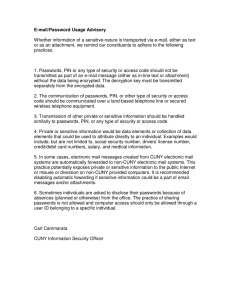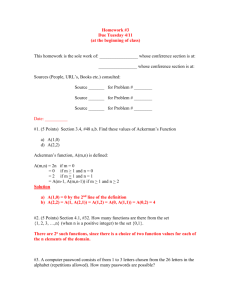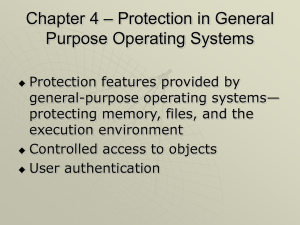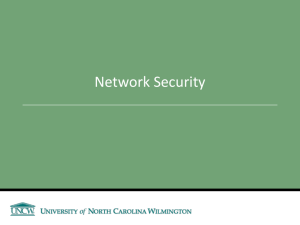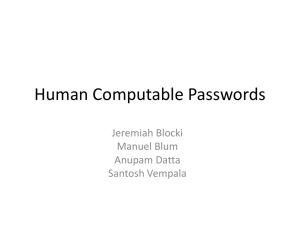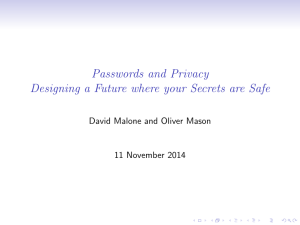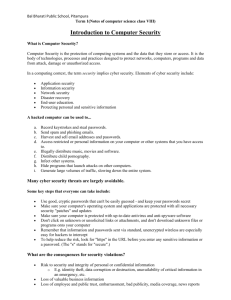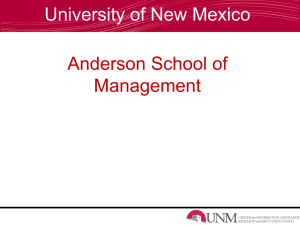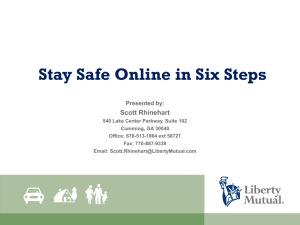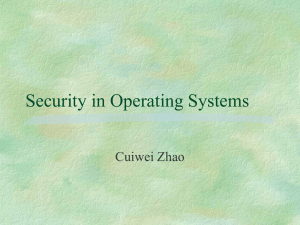Technology does not end harassment
advertisement
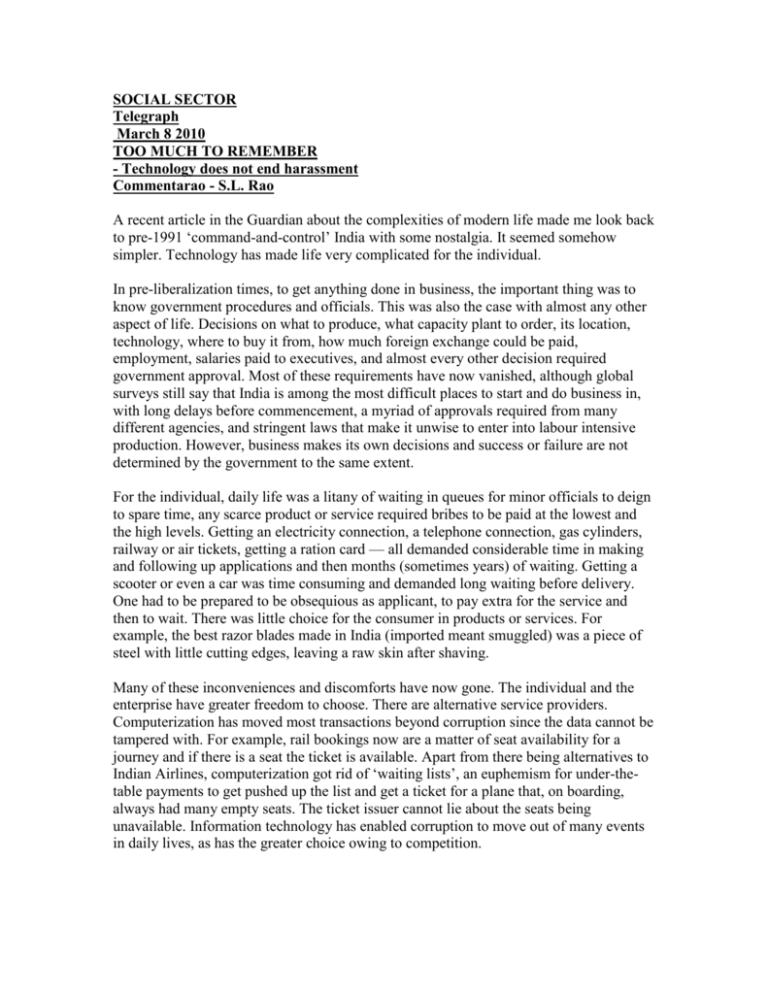
SOCIAL SECTOR Telegraph March 8 2010 TOO MUCH TO REMEMBER - Technology does not end harassment Commentarao - S.L. Rao A recent article in the Guardian about the complexities of modern life made me look back to pre-1991 ‘command-and-control’ India with some nostalgia. It seemed somehow simpler. Technology has made life very complicated for the individual. In pre-liberalization times, to get anything done in business, the important thing was to know government procedures and officials. This was also the case with almost any other aspect of life. Decisions on what to produce, what capacity plant to order, its location, technology, where to buy it from, how much foreign exchange could be paid, employment, salaries paid to executives, and almost every other decision required government approval. Most of these requirements have now vanished, although global surveys still say that India is among the most difficult places to start and do business in, with long delays before commencement, a myriad of approvals required from many different agencies, and stringent laws that make it unwise to enter into labour intensive production. However, business makes its own decisions and success or failure are not determined by the government to the same extent. For the individual, daily life was a litany of waiting in queues for minor officials to deign to spare time, any scarce product or service required bribes to be paid at the lowest and the high levels. Getting an electricity connection, a telephone connection, gas cylinders, railway or air tickets, getting a ration card — all demanded considerable time in making and following up applications and then months (sometimes years) of waiting. Getting a scooter or even a car was time consuming and demanded long waiting before delivery. One had to be prepared to be obsequious as applicant, to pay extra for the service and then to wait. There was little choice for the consumer in products or services. For example, the best razor blades made in India (imported meant smuggled) was a piece of steel with little cutting edges, leaving a raw skin after shaving. Many of these inconveniences and discomforts have now gone. The individual and the enterprise have greater freedom to choose. There are alternative service providers. Computerization has moved most transactions beyond corruption since the data cannot be tampered with. For example, rail bookings now are a matter of seat availability for a journey and if there is a seat the ticket is available. Apart from there being alternatives to Indian Airlines, computerization got rid of ‘waiting lists’, an euphemism for under-thetable payments to get pushed up the list and get a ticket for a plane that, on boarding, always had many empty seats. The ticket issuer cannot lie about the seats being unavailable. Information technology has enabled corruption to move out of many events in daily lives, as has the greater choice owing to competition. But in place of complex procedures, corrupt officials and little choice, we now have the burden of living with information technology. I have a bank account in one of the most successful private banks in India. I am intimidated by an ATM. The one time I tried to use it, I could not remember my PIN, which the bank warns you not to note down where it is easily accessible. I made such a mess of it that I have always gone back since to the friendly human being behind the cash counter. Unfortunately, the numbers of these have fallen and it is difficult to find a human being to cash your cheque for you. But IT has certainly made for more efficient banking. Successful banks have ‘internet banking’ and ‘phone banking’. To access my account and find the balance in it, the recorded voice that comes on when I telephone the bank tells me I need to have a customer identification number, a phone banking identification and a PIN, apart, of course, from my bank account number. After repeatedly failing to get them correct, the machine kindly transfers me to a human being who transfers me to three more before a kind lady comes to my rescue and patiently explains what I need to do and that in future she would be my “relationship manager”. It was from her I found that the customer identification and PIN were the same but it was just that their recorded messages used both terms interchangeably, assuming the customer knew they were interchangeable. On top of my technological incompetence was the poor design of these systems. I am not one of those who spends much time opening different websites. Apart from the time it takes, each requires passwords and other identification devices. Everybody discourages use of passwords repetitively on different websites. I find that even an abstemious user like me has 14 different passwords to access email accounts, bank accounts when I want to find the bank balance and do not wish to brave the traffic to make personal visits to the bank, some newspapers that I read online, websites related to my areas of interest, some social networks, and my own website. Each of these requires a password. They must not have obvious connections to me, like my birth date, names of my wife or children, my place of residence, or, in their view worst of all, numbers in sequence, like 1234. I am warned not to create “weak” passwords, so that I have to incorporate letters, numbers and symbols like ‘&’ or ‘@’ in every password. I have to remember them all, a herculean task for a good memory, let alone a failing one. Obviously, I have to write all these down. When I need to find them I have to remember the place where I had safely stored the passwords, and usually that takes searches in many places and pages. When it comes to bank computers that are the “interlocutors” (not mediators), by the time I have found the password and entered the long sequence of numbers, letters and symbols, the computer becomes impatient and has either signed off or put me on to some callow call centre person who disconnects me after a while and I have to start all over again. Added to all this we will now have a super-number to memorize — the UID or the unique identity number. This will have so many digits that it must need be written out and be easily accessible. Perhaps we should tattoo it to our arms so that it is always accessible and not easily lost. Certainly, for the large number of very poor, illiterate people without permanent housing, this may be the best alternative. Information technology and the internet have brought a great amount of information to our fingertips. It has also made things very complicated and cumbersome. Sadly, there is no relief in sight. The author is former director-general, National Council for Applied Economic Research Top
